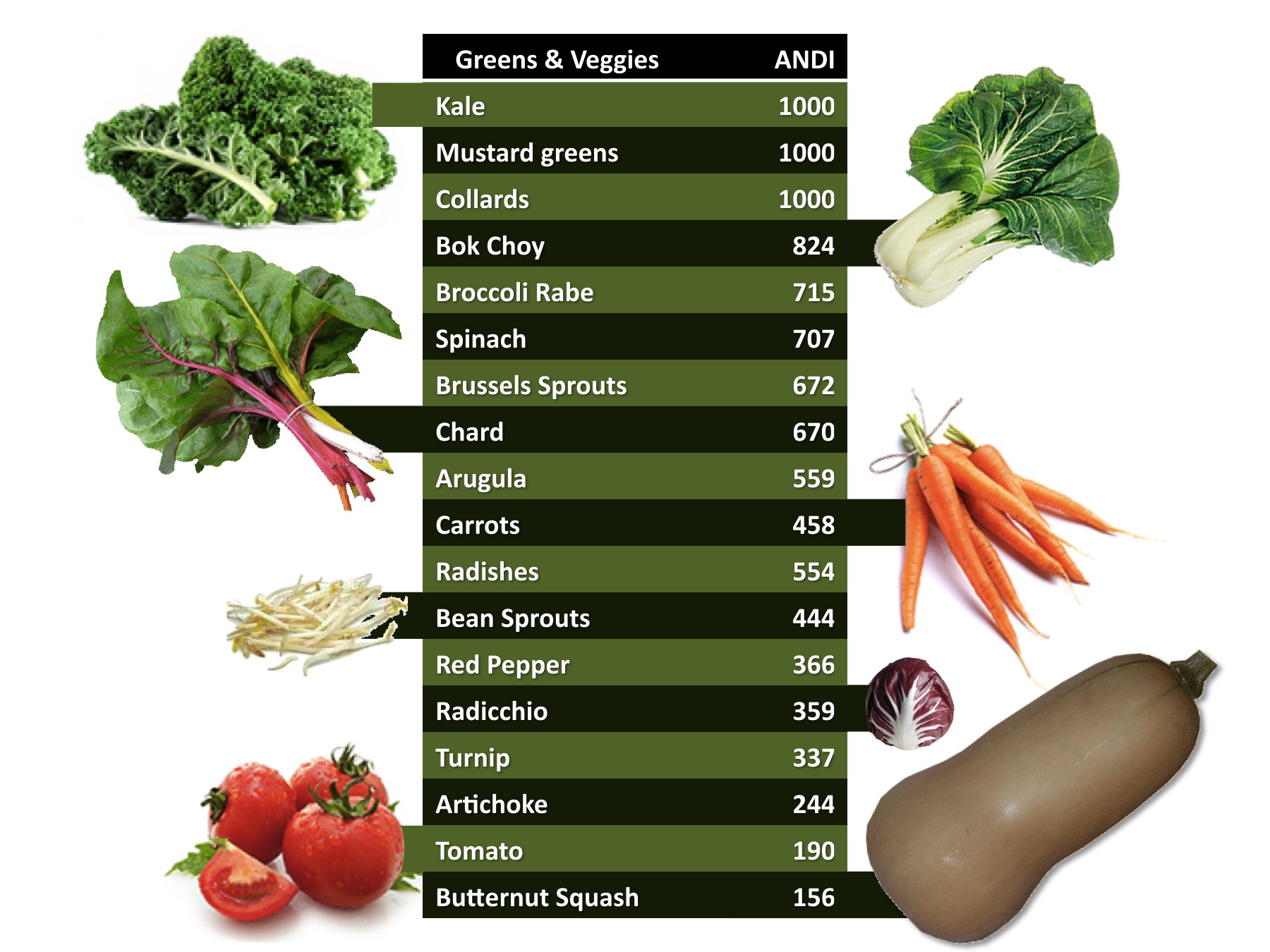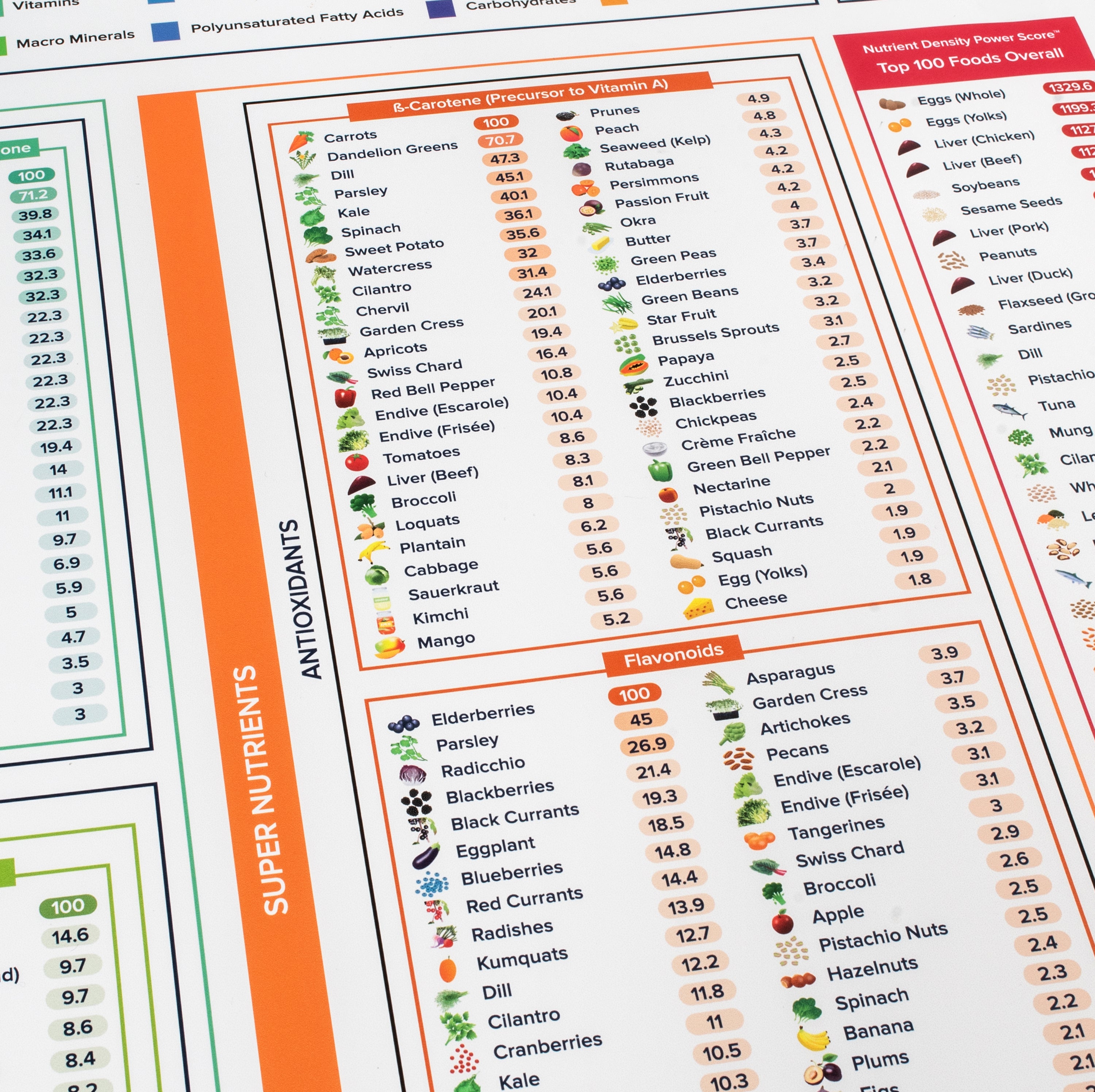
One Nutrient Density and Satiety Chart to Rule Them All Optimising Nutrition
April 18, 2023 by Marty Kendall Embark on a journey into the realm of nutrient density, a cornerstone for flourishing health. This extensive guide elucidates nutrient density, unveils a meticulous nutrient density chart, and offers insightful tactics to harness the full spectrum of essential nutrients.

Nutrient Density Part 2 Incorporating Nutrient Density into your Diet Be More Nutrition
Abstract Nutrient profiling is the technique of rating or classifying foods on the basis of their nutritional value. Foods that supply relatively more nutrients than calories are defined as nutrient dense. Nutrient profile models calculate the content of key nutrients per 100 g, 100 kcal, or per serving size of food.

nutrient density chart Nutrient Density Dr. Fuhrman’s ANDI (Nutrient Density) Scoring
This Digital Download PDF version of The Nutrient Density Chart™ offers an exact replica of our renowned chart, detailing 1,500+ Nutrient Density Power Score™ data points. It lists Essential and Key Conditionally Essential nutrients, each ranked by our unique Nutrient Density Power Score™ from 1 to 100. Delivered as

Calorie Density for Weight Loss PLANTSTRONG
The energy density of foods and beverages depends on the amount of water (0 kcal/g), carbohydrates (4 kcal/g), protein (4 kcal/g), fats (9 kcal/g) and alcohol (7 kcal/g) they contain.
What is Nutrient Density (and Why It Matters)? Optimising Nutrition
Nutrient Densities of the Diet in Relation to the Critical Nutrient Density. Table 4 also presents calculated critical nutrient densities for normal-weight and obese women. Because the reference energy requirements for normal-weight women are lower than for obese women (1850 kcal vs. 2250 kcal), the critical densities for vitamins and minerals.

Aggregate Nutrient Density Index or ANDI Score The Guide
Nutrient profiling is the technique of rating or classifying foods on the basis of their nutritional value. Foods that supply relatively more nutrients than calories are defined as nutrient dense. Nutrient profile models calculate the content of key nutrients per 100 g, 100 kcal, or per serving size of food. For maximum effectiveness, nutrient profile models need to be transparent, based on.

The Nutrient Density Chart™
The Nutrient Density Chart™ Vitamin B-2 Riboflavin Vitamin B-5 Pantothenic Acid Vitamin B-6 Pyridoxine Vitamin B-7 Biotin Vitamin B-12 Cobalamin Vitamin C Ascorbic Acid Vitamin D Cholecalciferol Vitamin E Alpha-Tocopherol Vitamin K Phylloquinone SATURATED FATTY ACIDS POLYUNSATURATED FATTY ACIDS

FOODS // The Nutrient Density Chart™ on Behance
Dr. Fuhrman created the ANDI (Aggregate Nutrient Density Index) to show how popular foods stack up in terms of micronutrient density per calorie. The more nutrient-dense food you consume, the more you will be satisfied with fewer calories. Check the rankings of foods you commonly eat - you might be surprised at their ANDI ranking. 1000 KALE

Why Nutrient Density Is a Mustfollow Thing Useful Tips on What Foods Should Be in Everyone’s Diet
the nutrient density of foods on the Canadian market. Health Canada publishes two databases which list nutrient values in Canadian foods. The fi rst is a large, comprehensive, computer-ized database called the Canadian Nutrient File (CNF). The 2007b version reports up to 143 nutrients in 5516 foods. The CNF can

Nutrient Density Part 2 Incorporating Nutrient Density into your Diet Be More Nutrition
Discover Optimal Nutrition with the Ultimate Nutrient Density Chart January 21, 2023 by Marty Kendall Embark on a transformative journey towards optimal nutrition with our meticulously crafted nutrient density and satiety chart.

What is Nutrient Density?
"The term "nutrient-dense foods" indicates that there are more beneficial nutrients in a food (e.g., vitamins, minerals, lean protein, healthy fats, complex carbohydrates) compared to nutrients to limit (e.g., saturated fat, sodium, added sugars, and refined carbohydrates). Examples of nutrient-dense foods include

Nutrient Dense Foods Chart Foods Details
Thus, the nutrient density scores are the averages across all chosen critical micronutrients, expressed in percent of RDA (OR AI) per 2,000 kcal of each food. Thus, a score of 100 means that if you only at that particular food, you would meet, on average, 100% of the required amount of all of the critical micronutrients.

Nutrientdensitiesoffoods by Dr Joel Fuhrman A score of 1000 means it is the most Nutrie
The Nutrient Density Chart™ contains a list of Essential Nutrients and key Conditionally Essential nutrients along with their top food sources ranked by a proprietary Nutrient Density Power Score™ of 1 to 100. The chart has 1,500+ Nutrient Density Power Score™ data points derived from Food Composition Databases.
Nutrient Density 101 Optimising Nutrition
The Nutrient Density Chart™ $100.00 Medium A1 (23.4 x 33.1 in - 59.4 x 84.1 cm) Large A0 (33.1 x 46.8 in - 84.1 x 118.9 cm) English Laminated Low stock: -855 items left Add to Cart Adding product.
Nutrient Density 101 Optimising Nutrition
The term "nutrient density" refers to the concentration of micronutrients and amino acids, the building blocks of proteins, in a given food. While carbohydrates and fats are important, these macronutrients can be partially synthesized by the body for a limited amount of time if dietary intake has been insufficient.

The Most Nutrient Dense Foods per Calorie Optimising Nutrition
Nutrient density identifies the amount of beneficial nutrients in a food product in proportion to e.g. energy content, weight or amount of perceived detrimental nutrients. Terms such as nutrient rich and micronutrient dense refer to similar properties.